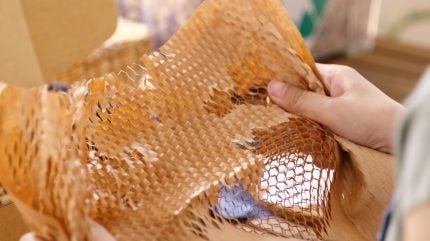
As environmental awareness continues to grow, the demand for sustainable packaging solutions is transforming industries across the globe.
Businesses are increasingly seeking innovative materials that not only meet functional requirements but also align with environmental goals.

Discover B2B Marketing That Performs
Combine business intelligence and editorial excellence to reach engaged professionals across 36 leading media platforms.
This shift is driven by consumer preferences, regulatory pressures, and a collective commitment to reducing environmental impact.
Embracing biodegradable and compostable materials
Biodegradable and compostable packaging materials have emerged as frontrunners in the quest for sustainable alternatives. Derived from natural sources, these materials break down more readily in the environment, reducing long-term pollution.
Starch-based bioplastics, for instance, are produced from renewable resources like corn, potatoes, and tapioca. These materials are versatile, suitable for both rigid and flexible packaging applications, and are increasingly common in the sustainable packaging landscape.
Polylactic Acid (PLA) is another biodegradable option, derived from fermented plant starch. While PLA offers a similar appearance and functionality to traditional plastics, it requires specific industrial composting conditions to break down effectively.

US Tariffs are shifting - will you react or anticipate?
Don’t let policy changes catch you off guard. Stay proactive with real-time data and expert analysis.
By GlobalDataMushroom mycelium packaging utilizes the root structure of fungi to create compostable packaging forms. This material is not only biodegradable but also requires minimal energy to produce, making it an eco-friendly choice for protective packaging.
Advancements in recyclable packaging solutions
Recyclable materials continue to play a crucial role in sustainable packaging strategies. Innovations in this area focus on improving the recyclability of packaging and reducing reliance on virgin materials.
Recycled paperboard has seen significant advancements, with modern recycling processes producing high-quality folding cartons that rival virgin materials in performance. These boards offer enhanced printability and are suitable for various packaging needs.
Companies like Amazon are leading the way by phasing out plastic-containing padded bags in favor of recyclable paper alternatives. By partnering with industry peers and expert organizations, they aim to improve recycling infrastructure and promote the use of easily recyclable packaging materials.
Sugarcane bagasse, a byproduct of sugar production, is being utilized to create biodegradable and recyclable packaging. This material not only reduces waste but also offers a sustainable alternative to traditional paper products.
Exploring emerging sustainable packaging innovations
The packaging industry is witnessing a surge in innovative materials that offer sustainable alternatives to conventional options. These emerging solutions are gaining attention for their potential to revolutionize packaging practices.
Seaweed-based packaging is an exciting development, offering a biodegradable and edible alternative to plastic. Companies like Notpla are pioneering this space, creating packaging solutions that dissolve in water and leave no harmful residues.
Milk protein films, derived from casein, are being explored for their potential in creating biodegradable packaging that offers excellent oxygen barriers, making them suitable for food packaging applications.
Hemp-based packaging is another promising area, with hemp’s strong fibers providing durability and biodegradability. While still in the early stages of commercialization, hemp packaging holds potential for various applications.
As the push for sustainable packaging continues, these innovative materials represent the forefront of eco-friendly solutions, offering businesses new avenues to reduce their environmental footprint.
Ultimately, sourcing innovative materials for packaging solutions is essential in the transition towards sustainability.
By embracing biodegradable, recyclable, and emerging materials, businesses can meet environmental goals, satisfy consumer demands, and contribute to a more sustainable future.





